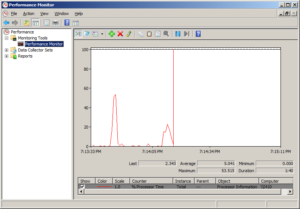
We are all impressed by the Performance Monitor capabilities in Windows 10 – but come on – what should we really be monitoring in there? And what are acceptable values? This list is compiled from the excellent text Exam Ref 70-698 Installing and Configuring Windows 10. I of course included this information in my course at CBT Nuggets in the Nugget on Troubleshooting Windows 10 Performance.
- LogicalDisk – % Free Space
- Greater than 15%
- PhysicalDisk – % Idle Time
- Greater than 20%
- PhysicalDisk – Avg. Disk Sec/Read
- Less than 25 ms
- PhysicalDisk – Avg. Disk Sec/Write
- Less than 25 ms
- PhysicalDisk – Avg. Disk Queue Length
- Should not be larger than 2 times the number of physical disks
- Memory – % Committed Bytes in Use
- Less than 80%
- Memory – Available Mbytes
- Greater than 5% of total RAM
- Processor – % Processor Time
- Less than 85%
- System – Processor Queue Length
- Should be more than twice the number of CPUs
- Network Interface – Output Queue Length
- Less than 2